One of the huge challenges of teaching middle school is creating an environment where students know that their teachers care about them first. My teaching mantra over the last 26 years has always been “Kids first, curriculum second.” Middle school kids need to know that they are being listened to, they are important, and that teachers are genuinely interested in getting to know them as a person.
As an AVID teacher, I devote an enormous amount of my first few months with lessons that help me get to know the kids as well as lower their affective filter. Since AVID draws from all social, ethnic, and economic groups at my school, many of the students don’t know each other. Sure, they might think they know another kid just from who they hang out with or what they did in elementary school. But a program like AVID depends on trust, teamwork and collaboration, so any activity I can find to make kids feel comfortable and get to know each other is a win-win.
This year, I decided to use Play-Doh on the first day of school in my middle school classroom after seeing a lesson by Heather Marshall of the blog Middle School Minds. At first I wasn’t sure what kind of impression it would make on my students. I worried that they might think it was too elementary. Or maybe that it was too messy or silly and they’d start flinging it across the classroom.
But like I tell my students, it’s when you step out of your comfort zone that the magic happens. So I went for it.
I ordered two cases of mini Play-Doh tubs, got some paper plates, and jumped in.
[fusion_builder_container hundred_percent=”yes” overflow=”visible”][fusion_builder_row][fusion_builder_column type=”1_1″ background_position=”left top” background_color=”” border_size=”” border_color=”” border_style=”solid” spacing=”yes” background_image=”” background_repeat=”no-repeat” padding=”” margin_top=”0px” margin_bottom=”0px” class=”” id=”” animation_type=”” animation_speed=”0.3″ animation_direction=”left” hide_on_mobile=”no” center_content=”no” min_height=”none”][bctt tweet=”I tell my students, it’s when you step out of your comfort zone that the magic happens.” username=”EducatorsRoom”]
On the first day of school, after just a brief introduction to my students, I used a modified version of Heather’s hyperdoc. I started by sharing the story of Play-Doh via video clip from the movie “How Do You Know”, ending with the line, “We’re all just one small adjustment away from making our lives work.” Watch the clip here.
I then gave every student a tub of Play-Doh, and told them to make something that symbolized themselves.
That’s it.
My AVID 8th graders just stared at me like I was nuts. They carefully lifted off the lid, a few taking a sniff. I watched as they poked and pushed at it until it came out of the tub.
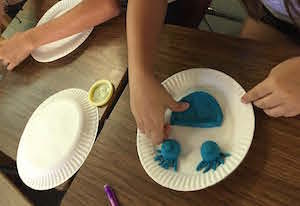
Then they mostly sat there, looking around to see what the other kids were doing.
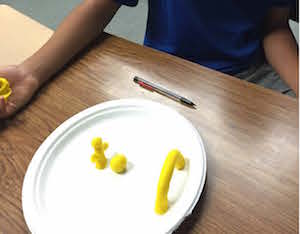
After a bit, I told them to just start squishing it, or rolling it, or smacking it.
That was a good way to see who needed to get some aggression out.
After awhile, they started to get into it. They giggled a bit, talked with their group members, and when they finished and I took their photo they smiled sheepishly, but agreed.
The AVID 9th graders were a different story. They completely bought in from the moment I mentioned Play-Doh. They 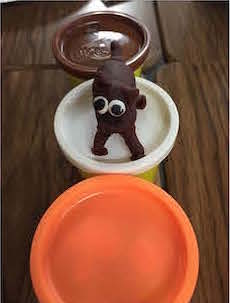 excitedly began forming creatures, flattened surfaces and etched names, wadded the clay up and made something new, laughed and giggled and basically thought it was the best first day EVER!
excitedly began forming creatures, flattened surfaces and etched names, wadded the clay up and made something new, laughed and giggled and basically thought it was the best first day EVER!
What I loved so much about this activity was watching the kids each react so differently to the experience. I was able to wander around the class, listening and chatting and asking questions. I saw who was introverted and extroverted, who was artistic and who struggled. I watched who got easily frustrated and who was able to take multiple approaches. Perfectionists definitely stood out, as did the risk takers.
[bctt tweet=”Sometimes we all need to remember that our middle school students are really just little kids in big bodies” username=”EducatorsRoom”]
And you know what? Not ONE pi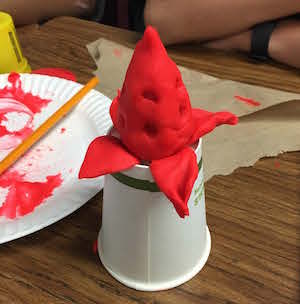 ece of Play-Doh was thrown. Every cap made it back on, and not even a speck got onto the carpeting. The kids respected the spirit of the activity, and while some may have left wondering what they were in for during the rest of the year, most of them are still begging to play with Play-Doh and make something much more advanced like stop motion movies.
ece of Play-Doh was thrown. Every cap made it back on, and not even a speck got onto the carpeting. The kids respected the spirit of the activity, and while some may have left wondering what they were in for during the rest of the year, most of them are still begging to play with Play-Doh and make something much more advanced like stop motion movies.
Sometimes we all need to remember that our middle school students are really just little kids in big bodies, looking for themselves and paying attention to what adults are paying attention to them. If you haven’t tried using Play-Doh in your middle school classroom, give it a try. What’s the worst thing that can happen? And you might just learn a few things about your students that you’d never know from giving a lecture.
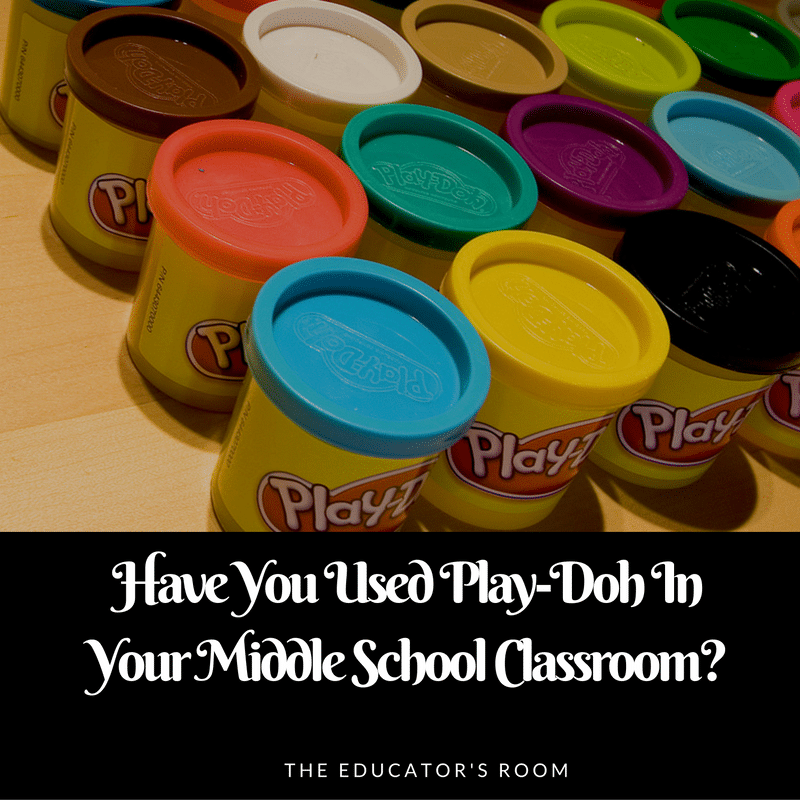
[/fusion_builder_column][/fusion_builder_row][/fusion_builder_container]







I’ve used Play-Doh in my Adult Education classes.